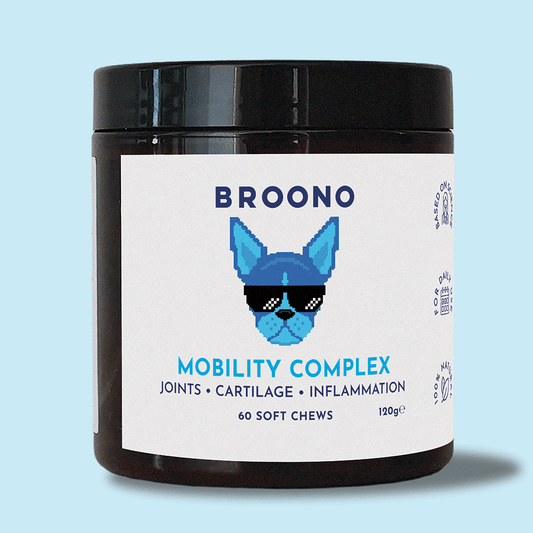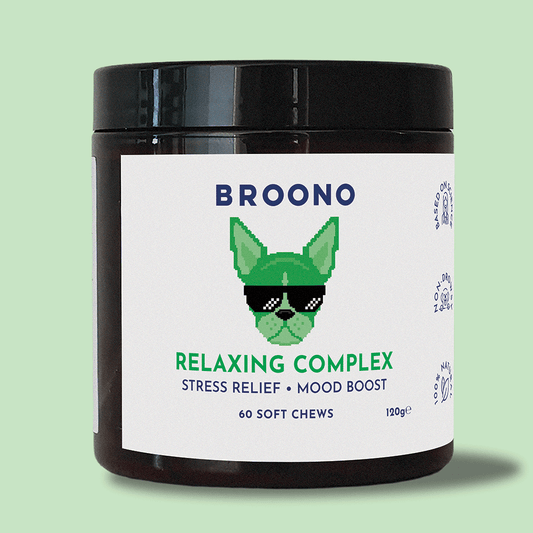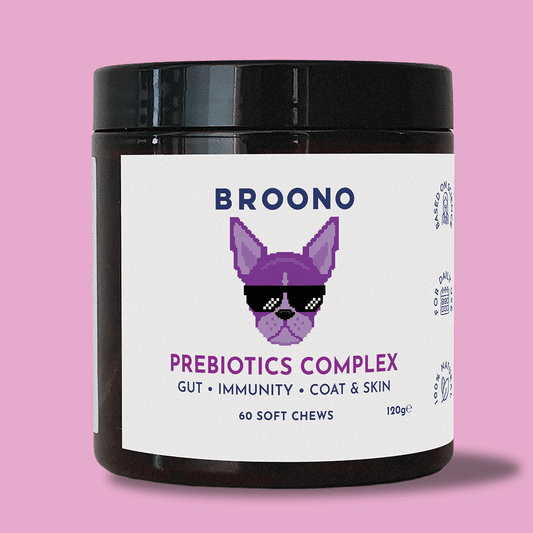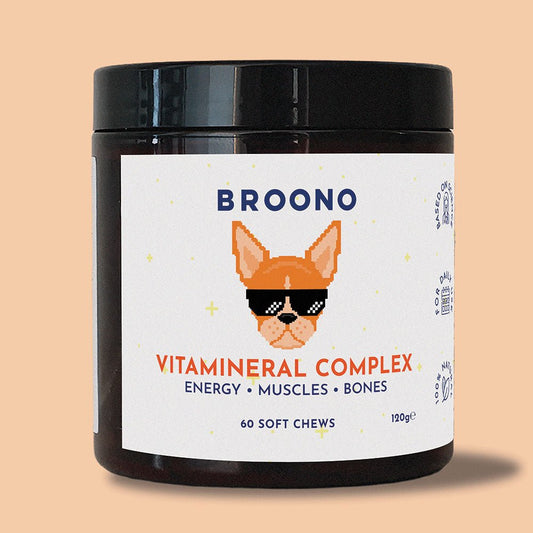Dogs have come a long way from their days of scavenging and hunting in the wild. Today, they’re part of our families—often sharing our couches, our schedules, and even our meal times. With this shift toward treating dogs like true family members, more owners are exploring whether supplements are necessary to fill potential gaps left by commercial dog foods. While many dog foods meet basic nutritional standards, not all nutrients remain intact through high-heat processing or lengthy storage. Below, we’ll delve into why supplements are gaining popularity, which nutrients commonly go missing, and how targeted supplementation can make a significant difference in a dog’s long-term health.
Why Dog Supplements Are Gaining Popularity
Health-conscious dog owners are increasingly seeking ways to support their pets’ well-being beyond standard kibble. Over the past decade, interest in canine supplements has grown due to several factors—ranging from scientific findings on nutrient degradation to a general desire for more holistic pet care.
Greater Awareness of Nutritional Gaps
Pet parents are more informed than ever, often reading ingredient lists with the same scrutiny they give their own groceries. This heightened awareness has led many to realize that even high-end dog foods might not always provide sufficient levels of certain key nutrients. For example, omega-3 fatty acids can degrade rapidly when exposed to heat and oxygen, so the actual amount of usable omega-3s in kibble might be much lower than what’s listed on the packaging.
Evolving Lifestyle and Breed Needs
Dogs today often live primarily indoors, get fewer opportunities to explore varied terrains, and might not ingest the range of micronutrients their wolf-like ancestors once did. Additionally, different breeds have unique requirements; a tiny Chihuahua won’t have the same needs as a giant Mastiff, and a working Border Collie will burn through resources faster than a couch-loving Basset Hound. Supplements give owners the flexibility to tailor nutrition to these unique circumstances.
Focus on Preventive Care
Just as people take vitamin C or fish oil to ward off potential health issues, owners increasingly recognize the preventative potential of supplementation for their dogs. Certain antioxidants might help bolster immune function, while joint-support compounds—like glucosamine—can stave off or lessen the impact of arthritis. These proactive measures often result in reduced vet bills and a better quality of life over a dog’s lifespan.
Common Nutritional Gaps in Commercial Dog Food
Although commercial dog foods are designed to be “complete and balanced,” production methods can reduce nutrient potency. Here are some nutrients most vulnerable to these processes and why they matter.
Omega-3 Fatty Acids
Omega-3s—especially EPA (eicosapentaenoic acid) and DHA (docosahexaenoic acid)—are renowned for their anti-inflammatory properties. They can support everything from joint function and heart health to a shiny coat. Unfortunately, these fatty acids are fragile and often oxidize during the high-heat extrusion that turns raw ingredients into kibble. By the time that kibble lands in your dog’s dish, much of its omega-3 content may be compromised.
Heat-Sensitive Vitamins
Certain vitamins, particularly the B-complex group and vitamin C, can degrade quickly under heat and prolonged storage. Dogs do produce some vitamin C in their livers, but not always in amounts sufficient for optimal immune support—especially if they face added stress or illness. Meanwhile, B vitamins play a pivotal role in energy metabolism and nerve function. When heat causes these micronutrients to lose potency, dogs may end up with subtle deficiencies that manifest as low energy, poor coat quality, or sluggish digestion.
Protein Quality and Amino Acids
Protein content on the label doesn’t always tell the full story. Quality matters, including the amino acid profile and its bioavailability. In some cases, budget-friendly dog foods rely on protein sources that are harder for dogs to digest or low in essential amino acids like taurine. Over time, low-quality protein can affect muscle tone, heart health, and overall vitality.
Essential Minerals
Trace minerals such as zinc, selenium, and manganese are crucial for various enzymatic reactions, immune function, and antioxidant defenses. Although many dog foods add these minerals, they may be in forms that are not easily absorbed. This bioavailability issue can lead to mild but chronic shortages, showing up in issues like skin problems, dull fur, or suboptimal immune responses.
Types of Dog Supplements and Their Benefits
When it comes to bridging nutritional gaps, supplements come in a variety of forms—from chewable tablets to liquid concentrates. The choice often depends on your dog’s taste preferences and specific health goals.
Omega-3 Fatty Acids (Fish Oil, Algae Oil)
Many owners see marked improvements in coat sheen, reduced inflammation, and better mobility once they introduce fish oil or algae-based sources of omega-3s. Because dogs can’t synthesize adequate levels of EPA and DHA on their own, supplementation helps ensure a more consistent intake. High-quality omega-3 supplements typically undergo processes to remove heavy metals and contaminants, making them safer than simply feeding your dog large amounts of certain fish.
Vitamins and Minerals
For dogs suspected of or tested for specific deficiencies, a targeted supplement with vitamins and minerals can be transformative. Vitamin E, for example, is a powerful antioxidant that supports heart, liver, and immune health. Zinc helps maintain skin health and coat quality, while certain mineral blends can improve a dog’s energy levels. It’s wise to select supplements that specify exact dosages to avoid inadvertently overloading your dog on particular nutrients.
Joint Support Compounds (Glucosamine, Chondroitin, MSM)
Large breeds and senior dogs often suffer from joint stiffness or more serious issues like hip dysplasia. Glucosamine is a natural compound found in healthy cartilage, helping to maintain elasticity. Chondroitin works alongside glucosamine to bolster cartilage structure and may slow down the progression of osteoarthritis. Methylsulfonylmethane (MSM) can also help reduce inflammation and support overall joint flexibility. Though results vary, many dogs become more active and comfortable after a few weeks of consistent use.
Probiotics and Prebiotics
Your dog’s gut hosts a complex community of bacteria crucial for digestion and immune function. Probiotics (living beneficial bacteria) can help rebalance the gut flora, particularly after antibiotic treatment or bouts of digestive upset. Prebiotics—like inulin and other specialized fibers—feed these beneficial bacteria. When combined, they can ease issues like chronic diarrhea, gas, or even skin problems linked to poor nutrient absorption.
Specialty and Herbal Supplements
In addition to core supplements like omega-3s or vitamins, a range of specialty products promises benefits for specific needs. Antioxidant blends containing nutrients like beta-carotene or coenzyme Q10 aim to combat oxidative stress at the cellular level. Some herbal solutions, such as milk thistle, are often used to promote liver health. While scientific backing varies, many owners report positive outcomes, particularly when these supplements are used alongside a balanced diet.
Real-Life Examples and Success Stories
Stories from other dog owners can help illustrate the potential impact of the right supplement strategy. Here are a few scenarios that highlight notable transformations.
Senior Dog Mobility
Consider an aging Labrador Retriever struggling to climb stairs due to joint pain. After starting a daily regimen of glucosamine and chondroitin, the dog begins moving more freely, no longer hesitating before bounding up steps to greet family members. Although not a miracle cure, the supplement provides enough relief to improve the dog’s overall quality of life.
Chronic Allergies
Another dog battles year-round itching, biting at its paws, and frequent ear infections. Switching foods alleviates some issues, but the real difference comes when the owner introduces an omega-3 fatty acid supplement. Within weeks, the dog’s scratching lessens, ears clear up faster, and even the coat appears glossier—suggesting that the extra anti-inflammatory support helped soothe underlying conditions.
Gastrointestinal Upsets
Some dogs can’t seem to shake chronic diarrhea or frequent bouts of indigestion, even on a decent diet. After introducing a high-quality probiotic supplement, their stool quality normalizes, and the dogs appear more energetic. Owners often note that the improvements persist even after the dog finishes a course of antibiotics, as the healthier gut flora remains more stable.
Shiny Coat Transformation
Dull fur might seem like a cosmetic concern, but it often hints at deeper nutritional imbalances. Adding supplements rich in omega-3s, zinc, and B vitamins can rejuvenate coat luster and skin health. This change usually emerges within a month or two of consistent supplementation and underscores the dog’s improved internal balance.
Recommendation for Routine Health Monitoring
To keep track of your dog’s overall progress and catch any emerging issues, schedule at least one veterinarian visit every six months. Regular checkups can spot shifts in weight, coat quality, or organ function that may indicate the need to adjust your dog’s diet or supplement regimen. Even if your dog appears perfectly healthy, these appointments can confirm that the supplements you’ve chosen are delivering the intended benefits.
Conclusion
Dog supplements aren’t just a trendy add-on; they can be a vital piece of the puzzle for canine well-being. Whether your dog needs joint support, improved gut health, or a boost in essential vitamins, targeted supplementation can fill crucial gaps left by even the best commercial foods. By understanding why certain nutrients become deficient, exploring the available supplement types, and paying close attention to your dog’s reactions, you can craft a more tailored and effective nutrition plan.
Ultimately, each dog is unique—what works wonders for one pup might not be as beneficial for another. Yet, the goal remains the same: to ensure our four-legged companions thrive, not just survive. With regular observation, occasional blood work or tests when needed, and that twice-yearly vet visit, you can proactively address your dog’s nutritional needs. In doing so, you’ll likely see improvements in energy, mobility, coat shine, and overall happiness—rewarding you with the peace of mind that you’re providing the best possible care.





